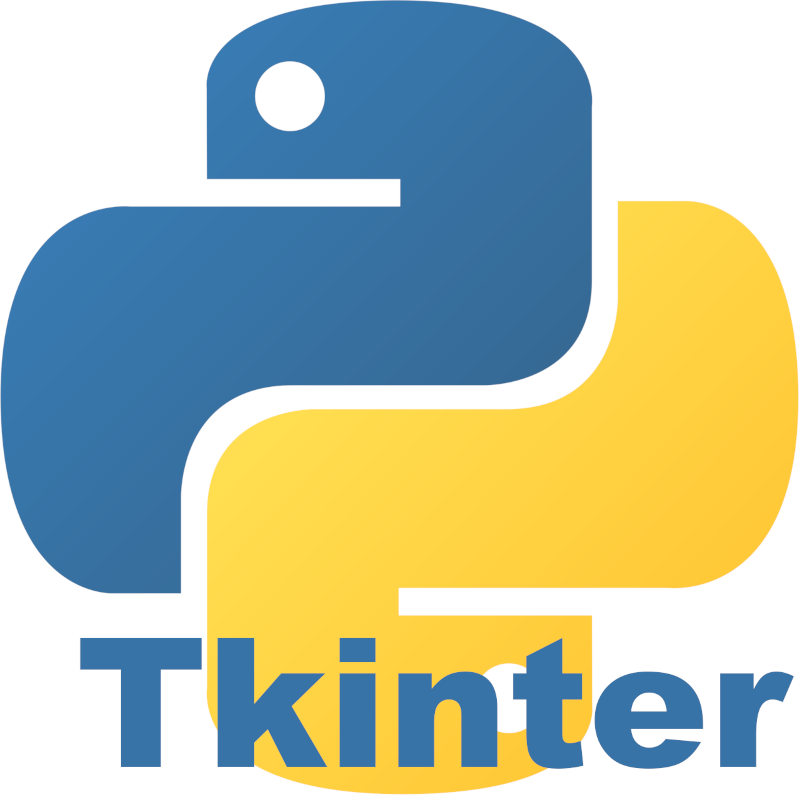When it comes to building graphical user interfaces (GUIs) in Python, Tkinter is one of the go-to toolkits, even though it may not be the flashiest or most modern. However, Tkinter offers a great way to get started with building Python GUI applications, making it an excellent choice for beginner to intermediate developers. Through my project, RecipeVault, I explored how to use Tkinter to create an intuitive, user-friendly recipe management system.
Why Tkinter?
Tkinter is the standard Python interface to the Tk GUI toolkit. It’s widely used because it comes pre-installed with Python, and while it might not offer the sophisticated aesthetics of more modern frameworks like PyQt or Kivy, it’s straightforward and effective for smaller applications. With Tkinter, you can build functional applications without having to worry about additional dependencies.
The Basics: Buttons, Labels, and More
In the RecipeVault project, several essential Tkinter objects were used to build the user interface. Here’s a breakdown of some of the fundamental components and how they’re implemented.
1. Buttons (Button)
Buttons are used for triggering actions like adding a new recipe, saving information, or opening a file.
import tkinter as tk
def on_click():
print("Button clicked!")
root = tk.Tk()
button = tk.Button(root, text="Add Recipe", command=on_click)
button.pack()
root.mainloop()
In RecipeVault, buttons are used to add functionality like adding and saving recipe data, and opening files.
2. Labels (Label)
Labels are used to display static text or images, such as indicating form fields or giving feedback to the user.
label = tk.Label(root, text="Recipe Name:")
label.pack()
In the application, Labels are used to define fields such as recipe names, categories, and ingredients, making the interface more user-friendly.
3. Entry Widgets (Entry)
Entry widgets allow users to input text, making them perfect for adding fields where users can input recipe names or ingredients.
entry = tk.Entry(root)
entry.pack()
In RecipeVault, the Entry widget is used to input data for recipes, such as the title, ingredients, and instructions.
4. Combobox (ttk.Combobox)
Comboboxes, provided by ttk, offer a dropdown selection of options. For example, RecipeVault uses comboboxes to allow users to select categories like “Dessert,” “Main Course,” or “Appetizer.”
from tkinter import ttk
combobox = ttk.Combobox(root, values=["Dessert", "Main Course", "Appetizer"])
combobox.pack()
5. Frames (Frame)
Frames are containers that group together other widgets, allowing for more organized layouts in your application.
frame = tk.Frame(root)
frame.pack()
Frames are used in RecipeVault to separate different sections, such as recipe details and image selection.
6. Messagebox (messagebox)
A useful way to display alerts, warnings, or simple confirmation dialogs. RecipeVault uses messageboxes to confirm actions such as saving a recipe or alerting the user of an error.
from tkinter import messagebox
def show_message():
messagebox.showinfo("Info", "Recipe saved!")
button = tk.Button(root, text="Save Recipe", command=show_message)
button.pack()
Building a Simple UI in RecipeVault
The user interface for RecipeVault brings these elements together to create an intuitive application for managing recipes. When entering a new recipe, users can type in the recipe name, choose a category from a dropdown, and add the ingredients and instructions. When the recipe is saved, a messagebox confirms the successful save, and the recipe is added to the list.
Here’s an example snippet showcasing how to integrate a button, label, and entry widget together:
import tkinter as tk
from tkinter import messagebox
def save_recipe():
recipe_name = entry.get()
if recipe_name:
messagebox.showinfo("Success", f"Recipe '{recipe_name}' saved!")
else:
messagebox.showwarning("Error", "Recipe name cannot be empty")
root = tk.Tk()
root.title("RecipeVault")
label = tk.Label(root, text="Recipe Name:")
label.pack()
entry = tk.Entry(root)
entry.pack()
button = tk.Button(root, text="Save Recipe", command=save_recipe)
button.pack()
root.mainloop()
Why Tkinter is a Great Start
Tkinter’s ease of use makes it an excellent choice for learning GUI development, even if its visual appeal isn’t as polished as more modern libraries. It’s perfect for small projects where you want to focus on functionality rather than aesthetics. Plus, it helps you understand fundamental GUI programming concepts such as event-driven programming, widget management, and layout design.
For those looking to get started with Python GUIs, Tkinter provides a great foundation. You can always switch to more complex toolkits later as your project grows, but with Tkinter, you can get a working application up and running in no time.
If you’re interested in seeing how Tkinter can be used in a practical application, check out the RecipeVault project. It’s a recipe management system that leverages Tkinter’s simplicity while introducing useful GUI components like buttons, labels, and comboboxes, all designed to make user interaction smooth and intuitive.
Happy coding!
